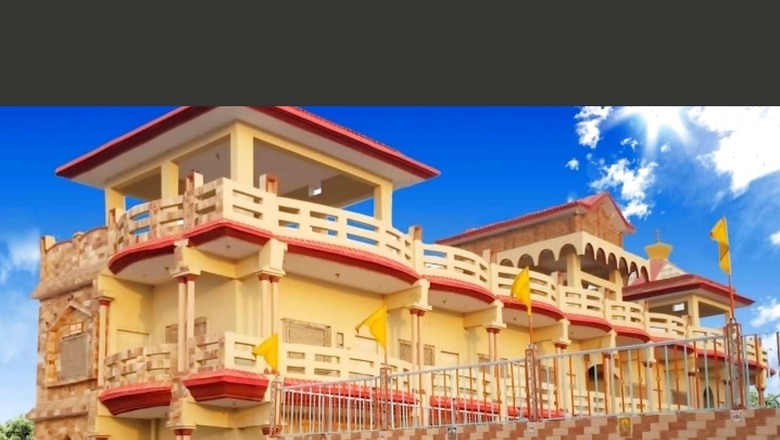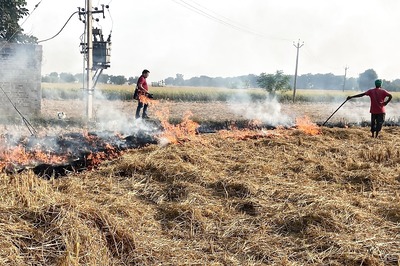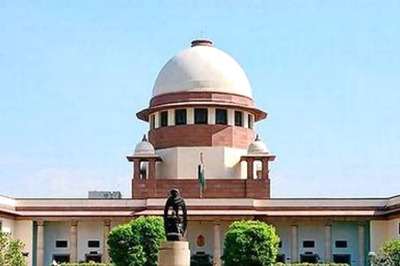
views
Around 100 Indian pilgrims arrived in Pakistan on Tuesday to take part in festivities in connection with the 314th birth anniversary of Hindu saint Satguru Shadaram Sahib in Sindh province. Pakistan had issued 100 visas to Indians keen to participate in the anniversary celebrations, an official statement issued by the Pakistan High Commission had said.
The Hindu pilgrims arrived here via Wagah border where they were greeted by Evacuee Trust Property Board (ETPB) additional secretary Rana Shahid Salim, deputy secretary Fraz Abbas and local leader Kishan Sharma. ETPB spokesperson Amir Hashmi told PTI that around 100 Indian pilgrims arrived in Lahore on Tuesday.
Issued 100 visas to a group of Indian Hindu pilgrims visiting Pakistan to participate in the 314th Birth anniversary celebrations of Shiv Avtari Satguru Sant Shadaram Sahib, at Shadani Darbar Hayat Pitafi, Sindh from 22 Nov to 3 Dec: Pakistan High Commission in Delhi— ANI (@ANI) November 21, 2022
“Amid high security they left for Shadani Darbar, Hayat Patafi, Mirpur Khas of Sindh province for yatra,” he said, adding that the main event will be held there on November 23 and 24. He said the pilgrims will also visit holy places in Sukkur, Dherki and Nankana Sahib. They will return to their homeland on December 3.
About the Shrine
Shadani Darbar, located in Hayat Pitafi, Ghotki district, is thought to be the largest Hindu temple in Pakistan’s Sindh province.
According to Hindu mythology, Sant Shadaram Sahib is considered to be an avatar of Lord Shiva. In October 1708, he was born in Lahore to a Lohana Khatri family. He is also thought to be a direct descendant of Lord Ram’s son, Lav.
According to the official website of Shadani Darbar, Sant Shadaram Sahib travelled to various holy places, including Haridwar, Yamunotri, Gangotri, Amarnath, Ayodhya, and the Pashupathinath Temple in Nepal, since the age of 20. During the reign of Raja Nand, he arrived in Mathelo, the capital of Sindh, in 1768, and built a Shiv temple and enlightened the sacred holy fire (Dhuni Sahib).
After a while, he and his devotees left his temple in Mathelo and settled near another holy village, Hayat Pitafi, where he laid the foundation for Shadani Darbar. He dug a sacred well there and enlightened the “Holy Fire” known as “Dhuni Sahib.”
‘A Miracle’
The darbar has seen eight other ‘gaddisars,’ or heads, since Sant Shadaram. Dr Yudhister Lal, the current gaddisar, resides primarily in Raipur, Chhattisgarh. Mata Deepika, his wife, is from Jalna in Maharashtra, stated a report by Indian Express.
The shrine has also seen a woman gaddisar, Mata Sahib Hassi Devi, who took over the position in 1852.
While all of the gaddisars are thought to be spiritually powerful, there is an intriguing story about the sixth, Satguru Sant Manglaram Sahib.
“In 1930 due to the divide and rule policy of the British government, local Muslims were instigated by the rulers to harass, loot and kill Hindus, but “Sant Manglaram Sahib mixed holy dust (Dhuni Sahib) and water and threw it around the boundaries of Hayat Pitafi. As a result of this, when the aggressors crossed into the village, they became blind. They gained back their eyesight as soon as they exited the village. In this way, the people of Hayat Pitafi were saved by the Miracle of Sant Manglaram Sahib,” states the website of the shrine.
It is also believed that anyone who seeks blessings from the ‘Dhuni Sahib’ and drinks the water from the well will be relieved of all his sufferings and misfortunes. Aside from that, his anniversary is commemorated each year by holding ‘Agni pooja’ and mass weddings at the same time. On this day, the holy books ‘Geeta’ and Guru Granth Sahib are also recited.
India- Pakistan Joint Protocol on Religious Pilgrimages 1974
Pilgrims from both countries are granted visas to visit certain religious shrines without having to go through the usual immigration process under the protocol. Pilgrims can only travel in groups, and the number of such groups is set each year.
Currently, the protocol includes five Muslim shrines on the Indian side and 15 shrines on the Pakistani side, the majority of which are gurdwaras. Every year, up to 20 parties may be permitted to travel from one country to another. This figure may be updated from time to time. Every effort should be made to ensure that the places of religious worship on the agreed-upon list are properly maintained and their sanctity is preserved, the protocol states, adding that the visitors in this category will be issued ‘Visitor Category visas’.
The Shrines Covered:
In India
- Ajmer Sharif Dargah, dedicated to sufi saint Moinuddin Chishti in Ajmer, Rajasthan
- Nizamuddin Dargah, dedicated to sufi saint Nizamuddin Auliya, in Delhi
- Amir Khusro, dedicated to Sufi musician Amir Khusro in Delhi
- Sirhind Sharif, Mujaddid Alf Sani in Sirhind, Punjab, India
- Kalyar Sharif, dedicated to sufi saint Alauddin Ali Ahmed Sabir, near Haridwar
In Pakistan
- Shadani Darbar in Hyat Pitafi, Ghotki
- Katasraj Dham in Lahore
- Gurudwaras of Nankana Sahib
- Gurudwara Panja Sahib, Hasan Abdal
- Samadhi of Ranjit Singh, Lahore
- Gurudwara Dera Sahib, Lahore
- Gurudwara Janam Asthan, Nankana Sahib
- Gurudwara Deewan Khana, Lahore
- Gurudwara Shaheed Ganj, Singhanian, Lahore
- Gurudwara Bhai Tara Singh, Lahore
- Gurudwara of Sixth Guru, Mozang, Lahore
- Birthplace of Guru Ram Das, Lahore
- Gurudwara Cheveen Padshahi, Mozang, Lahore
- Shrine of Data Ganj Bakhsh, Lahore
- Mirpur Mathelo, Sindh
Read all the Latest Explainers here




















Comments
0 comment